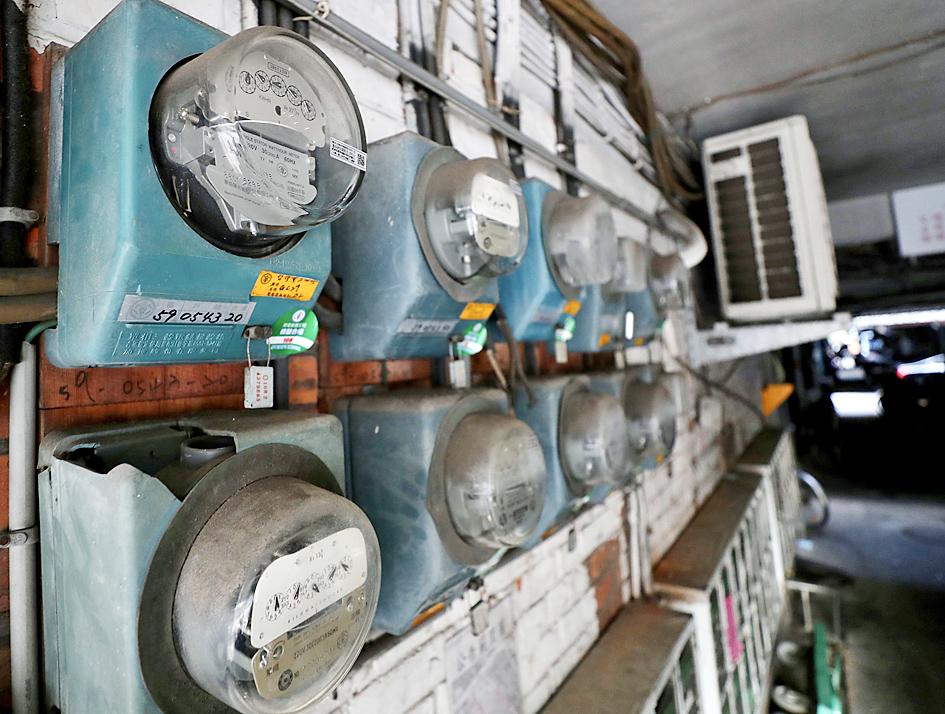The No. 2 reactor at the Guosheng Nuclear Power Plant in New Taipei City’s Wanli District (萬里) experienced a malfunction that triggered an automatic shutdown early yesterday morning, Taiwan Power Co (Taipower, 台電) said.
The exact cause of the incident is still being investigated, but there is no risk of a radiation leak, the state-run utility said.
“While we are still investigating the exact cause, the automatic shutdown was safely executed and there is no danger from radiation,” Taipower spokesman Chang Ting-shu (張廷舒) said.

Photo: CNA
The malfunction occurred at 6:33am, triggering an emergency shutdown, taking 985 megawatts of power offline, Chang said.
The control rods have now been fully lowered into the reactor and Taipower would apply with the Atomic Energy Council for the unit to be restarted as soon as the malfunction is resolved, he said.
However, it would take three days before the reactor reaches maximum output, Taipower said.
“The malfunction took place early in the morning during low power demand and it was possible for us to dispatch our reserve capacity immediately, leading to no loss of power [to the grid],” Chang said. “With the nation’s hydropower system full after the recent rains, we should be able to cope while the Guosheng Nuclear Power Plant’s No. 2 reactor remains offline.”
The operating reserve ratio is expected to remain “green,” or above 10 percent, in the coming days, but might dip into “yellow” territory, or 6 to 10 percent, during nighttime peak periods before the reactor is restarted, Taipower said.
As the mercury spiked close to 38°C, the nation’s electricity consumption reached 38.84 gigawatts (GW) at 1:50pm yesterday, with an operating reserve ratio of 10.17 percent, the company said.
The No. 1 reactor at the Guosheng power plant went offline on July 1 after the facility ran out of space to store spent nuclear fuel.
The No. 2 reactor is expected to keep generating power until March 2023, when its operating permit expires, Taipower said.

GROWING OWINGS: While Luxembourg and China swapped the top three spots, the US continued to be the largest exposure for Taiwan for the 41st consecutive quarter The US remained the largest debtor nation to Taiwan’s banking sector for the 41st consecutive quarter at the end of September, after local banks’ exposure to the US market rose more than 2 percent from three months earlier, the central bank said. Exposure to the US increased to US$198.896 billion, up US$4.026 billion, or 2.07 percent, from US$194.87 billion in the previous quarter, data released by the central bank showed on Friday. Of the increase, about US$1.4 billion came from banks’ investments in securitized products and interbank loans in the US, while another US$2.6 billion stemmed from trust assets, including mutual funds,

Micron Memory Taiwan Co (台灣美光), a subsidiary of US memorychip maker Micron Technology Inc, has been granted a NT$4.7 billion (US$149.5 million) subsidy under the Ministry of Economic Affairs A+ Corporate Innovation and R&D Enhancement program, the ministry said yesterday. The US memorychip maker’s program aims to back the development of high-performance and high-bandwidth memory chips with a total budget of NT$11.75 billion, the ministry said. Aside from the government funding, Micron is to inject the remaining investment of NT$7.06 billion as the company applied to participate the government’s Global Innovation Partnership Program to deepen technology cooperation, a ministry official told the

Taiwan Semiconductor Manufacturing Co (TSMC, 台積電), the world’s leading advanced chipmaker, officially began volume production of its 2-nanometer chips in the fourth quarter of this year, according to a recent update on the company’s Web site. The low-key announcement confirms that TSMC, the go-to chipmaker for artificial intelligence (AI) hardware providers Nvidia Corp and iPhone maker Apple Inc, met its original roadmap for the next-generation technology. Production is currently centered at Fab 22 in Kaohsiung, utilizing the company’s first-generation nanosheet transistor technology. The new architecture achieves “full-node strides in performance and power consumption,” TSMC said. The company described the 2nm process as

JOINT EFFORTS: MediaTek would partner with Denso to develop custom chips to support the car-part specialist company’s driver-assist systems in an expanding market MediaTek Inc (聯發科), the world’s largest mobile phone chip designer, yesterday said it is working closely with Japan’s Denso Corp to build a custom automotive system-on-chip (SoC) solution tailored for advanced driver-assistance systems and cockpit systems, adding another customer to its new application-specific IC (ASIC) business. This effort merges Denso’s automotive-grade safety expertise and deep vehicle integration with MediaTek’s technologies cultivated through the development of Media- Tek’s Dimensity AX, leveraging efficient, high-performance SoCs and artificial intelligence (AI) capabilities to offer a scalable, production-ready platform for next-generation driver assistance, the company said in a statement yesterday. “Through this collaboration, we are bringing two